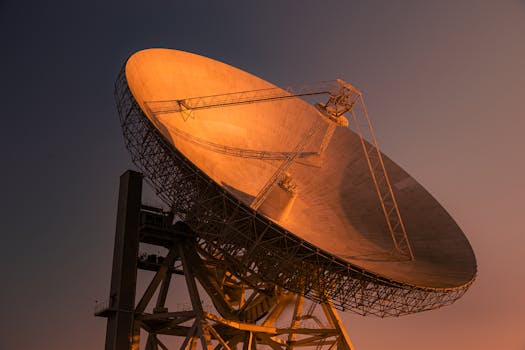GEO Satellites: Understanding the Technology and Applications

GEO satellites, or Geostationary Earth Orbit satellites, are a type of satellite that orbits the Earth at an altitude of approximately 36,000 kilometers. GEO satellites are stationed above the equator, where they can maintain a fixed position relative to a specific point on the Earth’s surface. This unique characteristic allows GEO satellites to provide continuous coverage of a particular region, making them ideal for various applications such as telecommunications, weather forecasting, and navigation.
The technology behind GEO satellites is complex and fascinating. These satellites are equipped with advanced transponders that can receive and transmit signals to and from Earth. The signals are transmitted through a large antenna, which is typically mounted on the satellite’s body. The antenna is designed to operate at specific frequencies, such as C-band, Ku-band, or Ka-band, which are allocated for different purposes like television broadcasting, internet connectivity, or mobile communications.
GEO satellites have numerous applications in the telecommunications industry. One of the primary uses is to provide internet connectivity to remote or underserved areas. By transmitting data signals to and from these regions, GEO satellites can bridge the digital divide and offer high-speed internet access to people who would otherwise be unable to connect. Additionally, GEO satellites are used for mobile communications, including voice and data services, as well as for broadcasting television channels and other multimedia content.
In recent years, the demand for GEO satellites has increased significantly, driven by the growing need for global connectivity and the expansion of the telecommunications industry. New technologies, such as high-throughput satellites (HTS) and very high-throughput satellites (VHTS), have been developed to meet this demand. These advanced satellites offer higher data transmission speeds and greater capacity, enabling them to support a larger number of users and applications.
Another important application of GEO satellites is in the field of navigation. These satellites can provide location information and timing signals, which are essential for various navigation systems, including GPS (Global Positioning System) and GLONASS (Global Navigation Satellite System). The accuracy and reliability of these navigation systems rely on the precise positioning and timing of the GEO satellites, making them a critical component of modern navigation technology.
In the section below, we will explore the future of GEO satellites and the emerging trends in the industry.
The future of GEO satellites looks promising, with several emerging trends and technologies on the horizon. One of the most significant developments is the increasing use of electric propulsion systems in GEO satellites. These systems offer improved fuel efficiency and greater maneuverability, allowing satellites to maintain their position and altitude more effectively. Additionally, the development of reconfigurable satellites is expected to play a major role in the future of the industry. These satellites can be reconfigured in orbit, enabling them to adapt to changing mission requirements and extend their lifespan.
Furthermore, the growing demand for high-throughput satellites is expected to drive the development of new technologies and innovations in the industry. The increasing use of advanced materials and 3D printing is also expected to have a significant impact on the design and manufacturing of GEO satellites. As the industry continues to evolve, it is likely that we will see the development of even more advanced technologies and applications for GEO satellites.
In conclusion, GEO satellites are a vital component of modern telecommunications, offering high-speed data transmission and global coverage. The technology and applications of GEO satellites are complex and fascinating, with a wide range of uses in the industry. As the demand for global connectivity continues to grow, it is likely that the importance of GEO satellites will only continue to increase.



